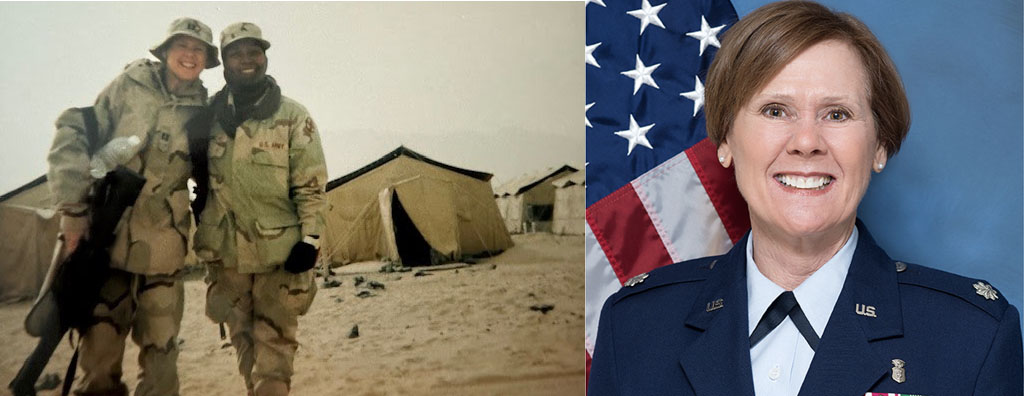Mary Nordgulen was asked to share the story of her military service to enable us to learn about the events, the dangers, and the traumas of war. And to understand how our military members serve to mitigate war’s terrible effects.
When I was a young teen, I had the good fortune to live overseas in Belgium. My father worked for IBM and our family traveled frequently, similar to the military lifestyle. After graduating from college, I wanted to return to Europe and thought the Air Force could provide that chance. I served five years active duty in the Air Force.
I joined the military for the wrong reason: to travel, but have stayed for the right one: to serve my country. I transferred to different branches of the military and served for 20 years.
But more on that later, first let me tell you about Combat Stress Control in Iraq.
It was just two days prior to Thanksgiving when I received the phone call informing me of my orders to deploy. I had been in the United States Army Reserves for three years. Almost two and a half weeks later I learned I was going to Iraq and my orders read for eighteen months!
I was what they call “cross-leveled” to a unit in Minneapolis. I had never met any of the members, let alone been to that area of the United States. After graduating from SUNY of Buffalo, New York, I swore I would never return north during winter. I called the unit and they sent me a packing list suggesting essential items. The list included wet wipes (no showers?), bug spray (sand fleas, mosquitos), sand goggles (sand storms), and 550 cord (my new dresser, closet, and whatever else the cord could hold). Little did I realize the significance of even these few items. After bidding adieu to my husband, I boarded the plane to Minnesota full of apprehension.
The mobilization phase of deployment occurred in Wisconsin. They taught us soldier skills in preparation for battle. I learned how to fire an M-16 while driving a Humvee, to fire at snipers while defending the perimeter of a compound, and how to distinguish friend from foe at checkpoint. I had to qualify firing the M-16 while wearing a gas mask. The hours were long, the weather was frigid, and I had to acclimate myself to living with over sixteen women in barracks. Hot water for a shower was at a premium and MRE (meals ready to eat) could have benefited from fresh herbs. But I left the United States with skills necessary to ensure my safety once in theater.
Our company flew to Kuwait where we awaited transportation to Iraq. The women shared a small temper tent and we slept in toasty warm sleeping bags on cots. The sandstorms tested the durability of our housing arrangements. But the storms did not discourage me from trekking the mile to the chow hall for a warm meal. I ate beside soldiers from Poland, Australia, and even some from Mongolia. Kuwaiti yoghurt, kiwi, and ice cream made the living accommodations more tolerable.
Some of the troops traveled by convoy to Balad, Iraq, while others flew on Cry Baby Airlines, Kuwait; the Air Force’s name for their C130 flights. I appreciated my year training as a flight attendant. Fortunately, I did not lose my lunch during the tactical maneuvers to avoid rocket fire during landing. Some of the others were not as lucky.
Our company split up into teams to offer coverage for all the troops throughout Iraq. I flew advanced party to Mosul to reserve lodging for the rest of my nine-member team. The previous Combat Stress Unit arranged for two-man trailers to live in, and we even had hot shower trailers and flushing toilets!
The goat yoghurt was wonderful!
I thought I had finally found something comparable to the Radisson. But the Radisson does not come complete with mortars and rocket fire. A soldier’s trailer only thirty feet from mine was hit by shrapnel traveling through his mattress before lodging itself into the wall. His Deuce-and-a-half (vehicle) was also hit by mortar that same day. I felt sure he’d be needing combat stress services.
The local Kurds were employed on base and provided concession stands and a coffee shop with Wi-Fi. I had the opportunity to share a meal with them. I gave a throw- away camera to one of them and he took photos of a shop off base. It was fascinating to experience their culture through photos shared.
I am a Certified Hand Therapist, but in the Army Occupational Therapists must prove themselves to be versatile. My role with the Combat Stress Unit was primarily in mental health. As an Occupational Therapist, I helped women and men suffering from war-associated fatigue. It was not uncommon for soldiers to lose sleep at night due to frequent mortar fire: then, only to have greater anxiety dodging improvised explosive devices while on convoys.
In the Restoration program we provided what we call “3 hots and a cot” – 3 hot meals and a restful night of sleep. The transformation of those soldiers was amazing, just getting a good night’s sleep and a hot meal.
– Mary Nordgulen
Lt. Col. Mary Nordgulen will tell her story at the Etowah Library on
September 23 at 3pm.
Admission is free, but registration is required due to limited seating.
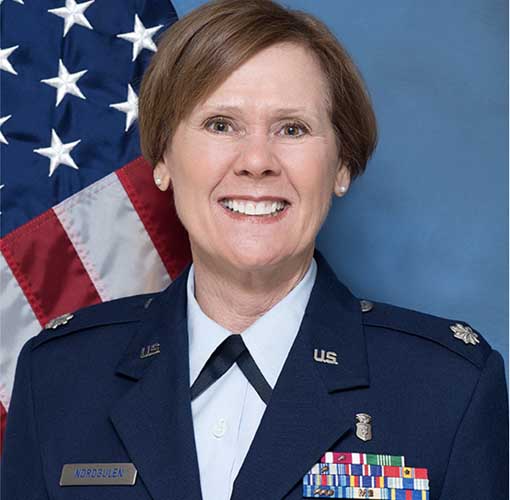
Lieutenant Colonel Mary Nordgulen, 2014
908th Airlift Wing, Montgomery, Alabama
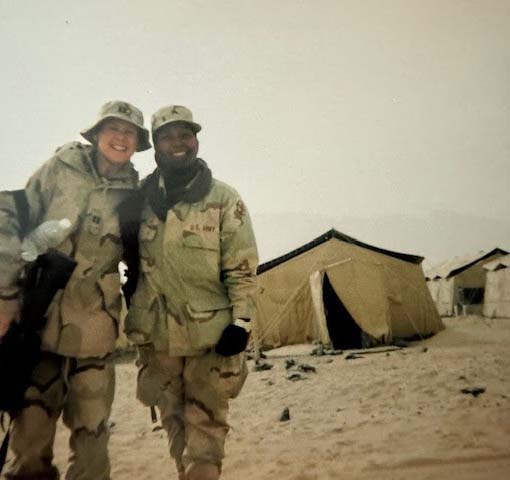
Nordgulen on left, training at Camp Virginia in Kuwait in preparation for travel to Iraq
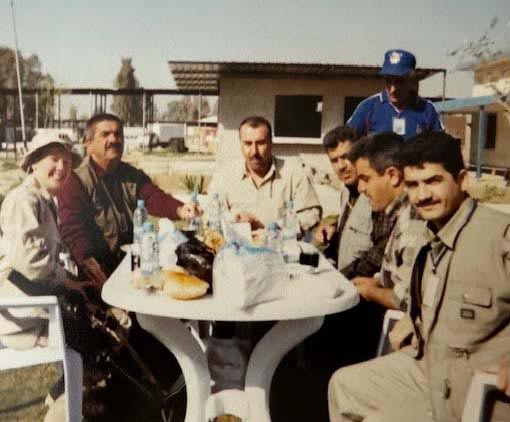
Lunch with the locals employed on base in Mosul. The goat yoghurt was wonderful!
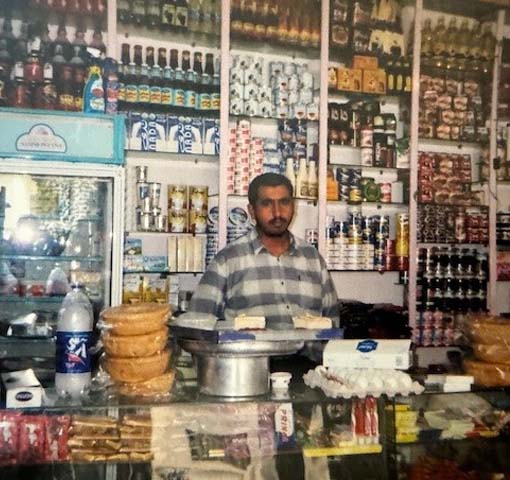
A local national’s store in Mosul
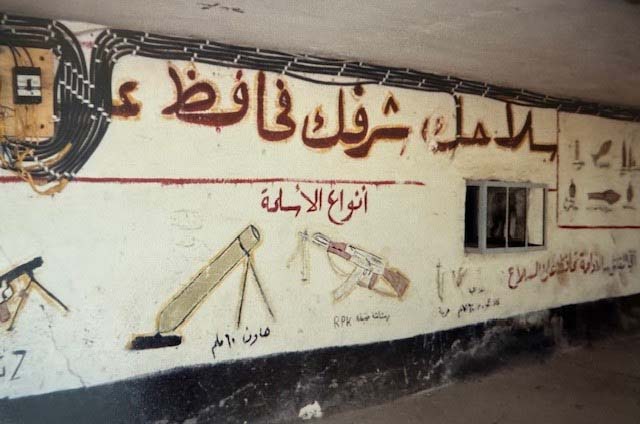
Illustrations on the side of a building in Mosul depicting weapons
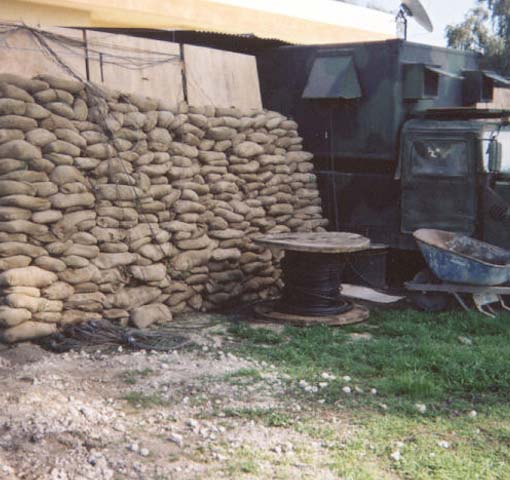
One of the first Combat Support Hospitals in Mosul
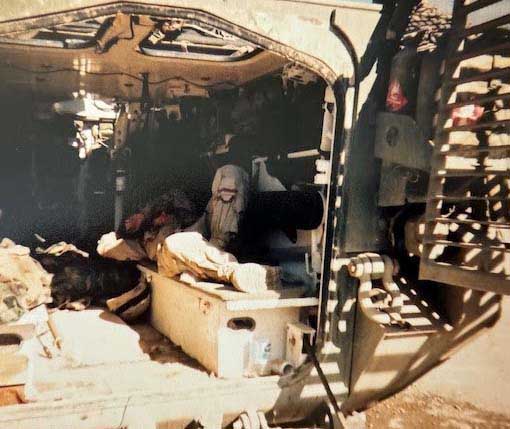
Inside a Stryker tank in Mosul, Iraq

